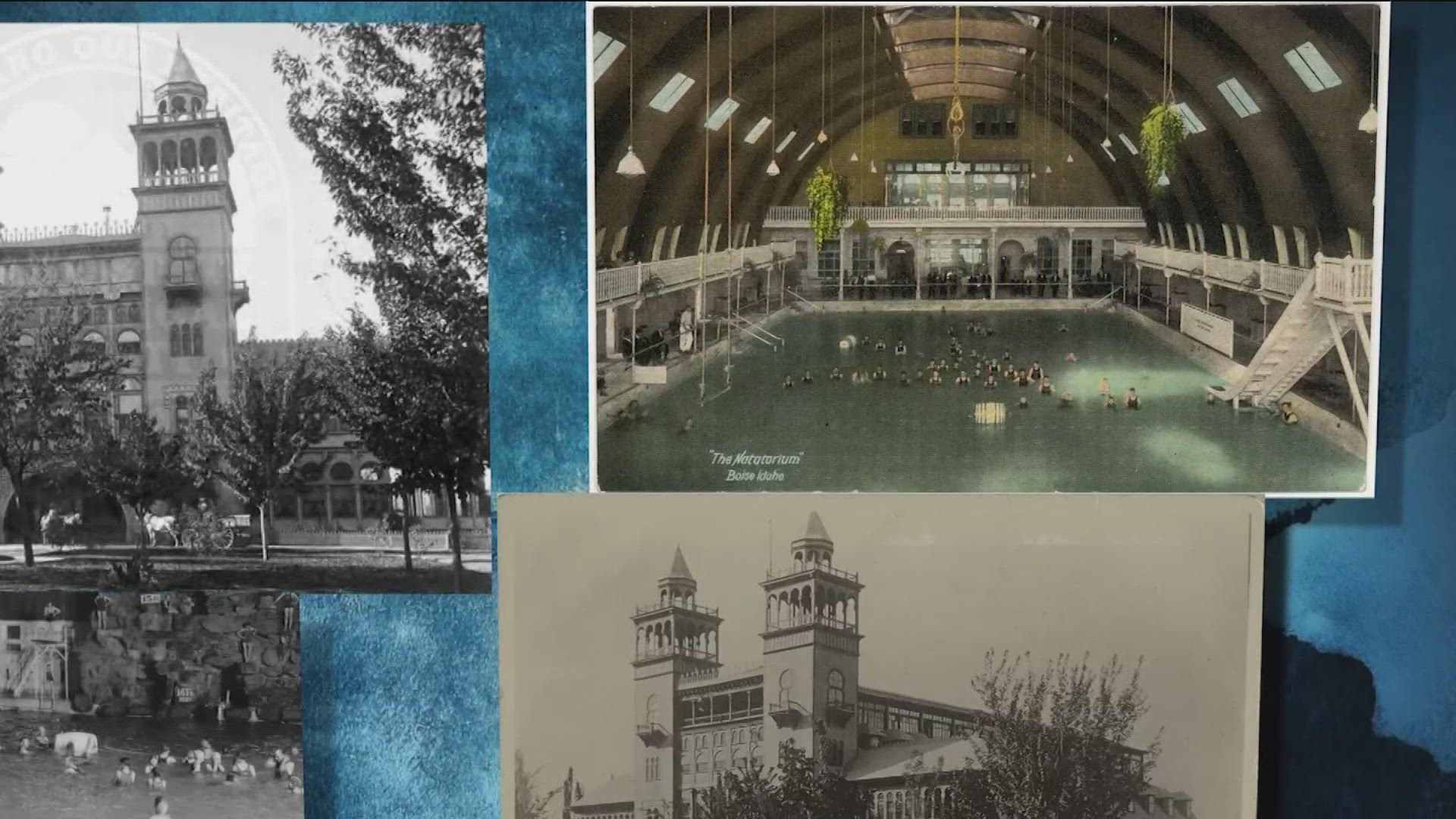BOISE, Idaho —
The City of Boise has unique geothermal features, specifically in the Boise foothills near the Old Idaho Penitentiary.
In 1891, Boise businessman C.W. Moore built his home on Warm Springs Avenue and decided to tap into that feature, heating his home and some businesses with geothermal heat.
“He founded a company, the Boise Artesian Hot and Cold Water Supply Company," said Maureen Lavelle, the history programs manager with the Boise City Department of Arts and History. "And they helped construct this area as a way of showcasing Boise's geothermal sources."
Moore decided to take it one step further.
That same year, he hired John C. Paulsen, a famous German architect, to build what would later be known as the Boise Natatorium.
“It was multiple, two stories, but then there were six-story towers on the sides of the front entrance. Big, arched windows," Lavelle said. "Just a very unique architectural style compared to what else you saw in Warm Springs. A lot of the houses were Queen Anne style, this was going to stick out like a sore thumb because it was so big and just so ornate."
It opened in May 1892 and featured a 120-foot-long pool, heated with geothermal heat.
"When you look at Idaho Statesman articles about the Natatorium, people compare it to like, the bathhouses you would have seen in ancient Rome, and people called this the Taj Mahal of the West," Lavelle said. "Like they were very excited to have a big beautiful social space.”
A social space is what Boisans were looking for at the time.
"I think the community just rallied behind it because they were excited for a social space," Lavelle said.
The Natatorium featured more than just a swimming pool.
“A billiard room, a dies parlor, a tearoom, a ball space, so people could have dances and socials," Lavelle said. “Social standards were different for the time. So, what was acceptable recreation was very different back then. And they had rooms designed to accommodate that.”
The community enjoyed the community space for about 50 years. However, they soon learned geothermal heat has a downside, specifically when it comes into contact with wood.
“According to the Idaho Statesman at the time, it was the second pool in the country to be heated or to use geothermal water," Lavelle said. "So that's very hot, creates a lot of steam, the steam rises and I mean, it's just all contained within this building."
In 1934, a severe thunderstorm rolled through the Treasure Valley, and the roof collapsed.
“It's believed that the humidity inside the room of the pool rotted or deteriorated some of the wooden infrastructure and that led to its collapse during a bad storm."
People were still inside at the time but had enough warning to get out.
The Natatorium was rebuilt a few years later but as an outdoor pool.
Today, it is part of the City of Boise's pool system (complete with a hydrotube) and opens for the summer on May 31.
While the pool is no longer indoors, it still uses geothermal heat to keep the water warm, just as it did when it was first built.
Watch more Local News:
See the latest news from around the Treasure Valley and the Gem State in our YouTube playlist:
HERE ARE MORE WAYS TO GET NEWS FROM KTVB:
Download the KTVB News Mobile App
Apple iOS: Click here to download
Google Play: Click here to download
Watch news reports for FREE on YouTube: KTVB YouTube channel
Stream Live for FREE on ROKU: Add the channel from the ROKU store or by searching 'KTVB'.
Stream Live for FREE on FIRE TV: Search ‘KTVB’ and click ‘Get’ to download.

